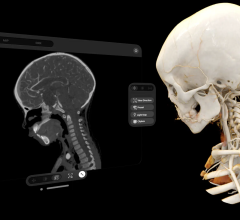
June 7, 2016 — A new report from Logicalis Healthcare Solutions discusses six ways telehealth providers can enhance the patient experience, with the key being whether patients are comfortable using the solution.
According to Logicalis, the adoption of telehealth solutions is clearly on the rise among healthcare providers, an increase significantly bolstered as large employers embrace the technology. Studies show at least 74 percent of the nation’s largest employers plan to offer telehealth benefits this year, and experts estimate virtual consults will increase 62 percent by 2020.
“With all the attention being paid to the technological aspect of telehealth, it’s also critical for healthcare organizations to pay close attention to the way they replicate the face-to-face experience in the virtual world,” said Kim Garriott, principal consultant, healthcare strategies, for Logicalis Healthcare Solutions. “If the entire telehealth experience doesn’t feel comfortable to the patient, the best technology in the world won’t make it a success. The key is to minimize the differences between practicing telemedicine and simply practicing medicine — for telehealth to succeed, the two must become one.”
When patients have a positive experience with telemedicine, they are more likely to use the service again. Creating the right environment, therefore, is as important as choosing the right technology. Logicalis’ telehealth experts have identified six important factors chief information officers (CIOs) need to consider and collaborate with their practitioners about before launching a telehealth initiative:
- Focus on first impressions: When people enter a doctor’s office or hospital, their first experience with that provider is usually in the waiting room. Often, there are televisions running loops of educational healthcare videos. There are handouts on tables and a receptionist to speak with. Why should the virtual world be any different? When planning a telehealth solution, it’s important to think through the user experience (UX) that each patient will have from the time they make an appointment until their visit is complete, and that includes the few minutes that may transpire between the time they sign on until the time the doctor sees them. Is the screen blank and the patient left to multitask, wondering if they’ve been disconnected? Or is there a lively virtual waiting room with information available while they wait? This first impression sets the stage for the entire visit and may determine whether or not the patient embraces or rejects telemedicine as a whole.
- Stage the location: Before implementing a telehealth solution, think carefully about the physical location where the consults will take place. Consider placing the physician’s endpoint in the doctor’s office, with an orderly bookshelf filled with medical journals behind the physician, or perhaps in an examination room with the exam table located directly behind the doctor’s seat and his or her framed credentials placed purposefully within sight. If patient consults take place in a pharmacy or other clinical setting, the same holds true; the patient’s endpoint should be in a comfortable, nicely appointed setting. In telehealth’s earliest days, many televisits took place with patients sitting in a stark, white, uninviting, sterile cubby with nothing more than a workstation and a chair. This kind of environment is not conducive to an open and personal discussion. The idea is to give the patient confidence in both the process and the doctor, and to make the televisit look and feel as similar to a face-to-face examination as possible.
- Choose a quiet spot: Whether the telehealth endpoint is located in a practitioner’s office or a local pharmacy, never place it out in the open where people are walking by or where the typical ebb and flow in the office or retail environment will distract either the patient or doctor while they talk. The environment should be completely quiet – eliminate all background noise so both parties can focus 100 percent of their attention on their interaction.
- Guard the patient’s privacy: Privacy is as important online as it is in the examination room. Whether a visit takes place in person or online, patients may need to disrobe to show a condition or injury to the doctor; they won’t feel comfortable if their virtual exam room does not seem private. Online patients expect — and deserve — the same courtesies as those being treated in person, an important consideration when deciding where to locate a telehealth solution inside the practice, pharmacy or physician’s home.
- Dress for success: The way the doctor looks may influence how the patient feels about the overall experience, particularly so with those new to telemedicine. Therefore, practitioners should “dress for success,” wearing what they normally wear to work — whether that’s a suit and tie or a lab coat — in front of the camera.
- Always make eye contact: Look the patient in the eye, not the computer. When patients and doctors interact in person, body language plays an important role; doctors may look at a chart while speaking to the patient, but the way they move and hold their bodies still says, “I’m paying attention.” Those nuances are lost in the virtual world, so it’s critical to make eye contact with the patient, and that means looking into the camera, not staring at the patient’s image on the screen. It may feel unnatural at first, but it will give the patient a sense of connectedness with the doctor even though they may be many miles apart.
For more information: www.us.logicalis.com


 May 01, 2024
May 01, 2024 








